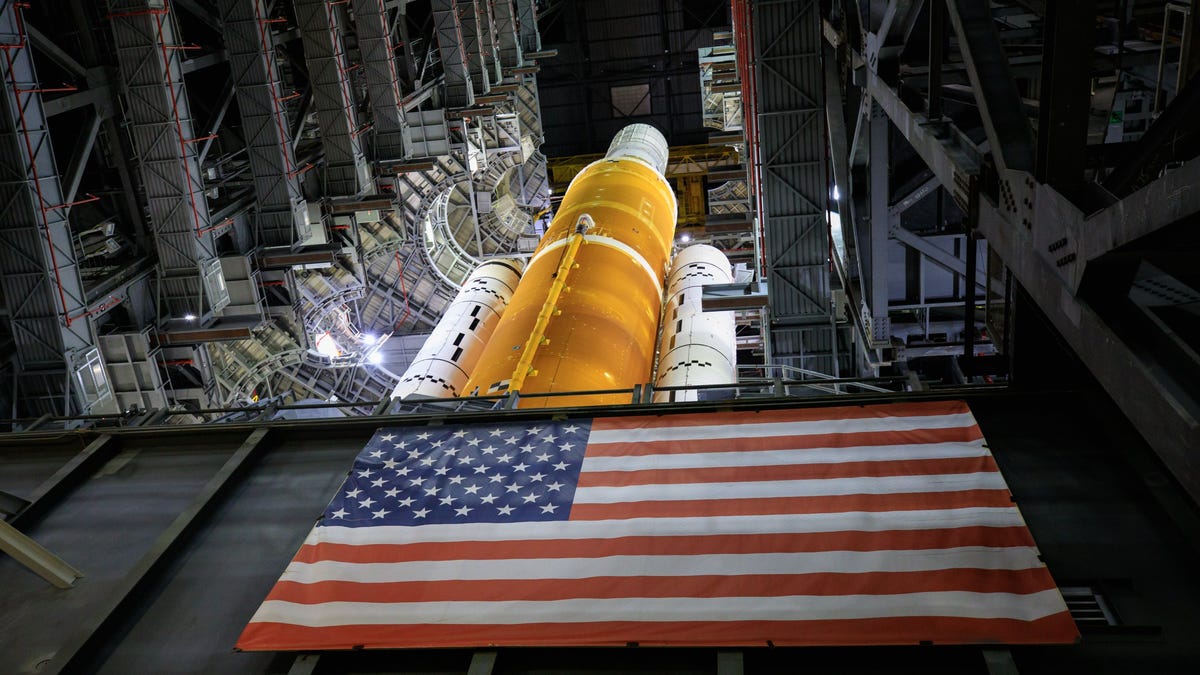NASA shows off new views of SLS, the most powerful rocket it has ever built
The hefty rocket will launch the Artemis 1 moon mission, but first NASA has to put all the parts together and run a lot of tests.
If you enjoy awe-inspiring feats of design and engineering, then take a moment out of your day to stare deeply into the latest images of NASA's extremely large Space Launch System rocket. It's the most powerful rocket NASA has ever built, and it shows in the grand scale of the beast.
SLS is coming together at the Kennedy Space Center in Florida where it will eventually be used to launch the uncrewed Artemis 1 mission to send an Orion spacecraft around the moon. While SLS has been expected to blast off as soon as this year, no one will be surprised if the big event slips into 2022.
While the timing of the launch may be a little uncertain, we know for sure that the behemoth is making progress. In June, we got a look at the central core stage together with the boosters along its sides.
The new views come from when NASA was running an Umbilical Release and Retract Test (URRT) inside the spacious Vehicle Assembly Building.
More images of @NASA_SLS taken around the Umbilical Release and Retract Test (URRT) inside High Bay 3 in the Vehicle Assembly Building. Teams will continue tests inside the building before transporting @NASA_Orion and stacking it atop the SLS, completing assembly for Artemis I. pic.twitter.com/6oNKELnL1m
— NASA's Exploration Ground Systems (@NASAGroundSys) September 23, 2021
SLS has multiple umbilicals that feed power, coolant, fuel and communications to the rocket. When the rocket ignites and lifts off, the umbilical arms swing out of the way. It's an important bit of launch choreography. The URRT is all about making sure those systems are working correctly.
On Wednesday, NASA shared a video of the test in action.
NEW FOOTAGE 🚨 Watch as the different platforms around the SLS rocket retract as part of the Umbilical Release and Retract Test (URRT) at @NASAKennedy. @NASAGroundSys conducted the test to prepare for future #Artemis I stacking and launch activities >> https://t.co/HNSKsaXf8c pic.twitter.com/IV8MrSwrYn
— NASA_SLS (@NASA_SLS) September 22, 2021
Artemis 1 will be a key first step to test SLS and the Orion spacecraft. There will be no humans on board, but it will set the stage for future crewed missions aimed at ultimately returning humans to the surface of our lunar neighbor. It's been decades since people were last there during the Apollo era of the 1960s and 1970s.
The SLS core stage (the center part) stands 212 feet (65 meters) tall and weighs 188,000 pounds (85,275 kilograms). The Orion spacecraft will eventually be added to the top of SLS like a crown. When SLS finally launches, it will signal the beginning of the Artemis era and perhaps make the moon feel a little more in reach for humanity once again.


